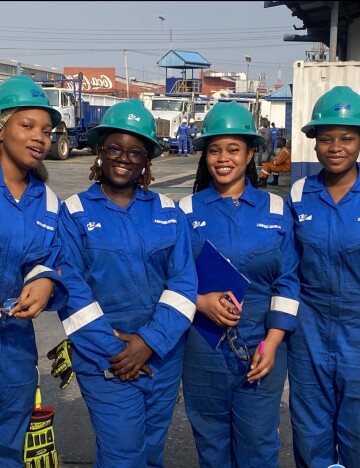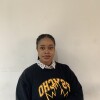When I began my 6-month internship at SLB Nigeria, I was excited but also slightly nervous. I had often read about SLB’s global reputation for technical excellence, sustainability, and innovation, but living that experience, being part of an environment where safety, precision, and performance are ingrained in every task was something I could never have fully imagined.
As a petroleum and gas engineering student from the University of Lagos, I had always been curious about how classroom concepts like porosity, permeability, and formation evaluation translate into real-world oilfield operations. My internship under SLB’s reservoir performance division (wireline segment) gave me that clarity and much more.
Where It All Began
From the very first week, I understood that SLB’s core values: people, technology, and performance aren’t just words on paper. Through the NEST (new employee safety training) and HR induction, I was introduced to the company’s safety culture: the nine life-saving rules, the SLB injury-prevention program, and the 5×5 rule.

These principles didn’t just apply to field engineers or supervisors, they guided everyone, from interns to senior personnel. One phrase that stayed with me throughout my internship was: “Not just safe, but SLB safe.”
“Safety is not just a policy, it’s a way of life.”
That philosophy shaped how I approached every single task, from the simplest maintenance routine to the most technical system setup.
My Journey Through the Labs
My rotation across multiple labs under the company’s wireline technology lifestyle management (TLM) system gave me a complete picture of how wireline operations are supported behind the scenes.
LAB A
LAB A was my first exposure to the importance of surface pressure control. I learned how wireline blowout preventers (BOPs), tool catchers, tool traps, and grease injectors ensure safe operations at the wellhead. This experience deepened my appreciation for one of SLB’s greatest strengths: its unwavering commitment to safety and well integrity.
LAB B
LAB B introduced me to formation testing and fluid sampling, a core aspect of reservoir performance evaluation. I participated in different service level maintenance processes (SLS 1, 2, and 3), depending on tool condition. Here, I learned how formation pressure data helps reservoir engineers make informed production decisions.
LAB C
In this lab, my team and I worked on the offshore skid unit (OSU), a self-contained system for offshore power generation and control. I also assisted in brake band and slickline unit assembly maintenance. This was where theoretical principles like Pascal’s Law came to life, transforming from textbook equations into practical mechanical systems.
LAB D
This lab focuses on calibration and quality control of wireline tools. Every tool returning from the field undergoes washing, greasing, electrical testing, and calibration checks before being redeployed. It taught me that accuracy is not just a goal, it is a responsibility that underpins the reliability of every logging operation.
LAB E
The shop floor is the operational hub where field engineers prepare tools for deployment. I worked with the Maxwell 2025 software and WAFE/E-WAFE systems for data acquisition. Here, I also learned about tool string setup, tension calibration, and continuity and insulation testing. This was where I first understood the concept of operational readiness: how each action, no matter how small, ensures job success in the field.
LAB F
This lab focused on tools used after the well has been cased and cemented. I assisted in maintaining casedhole production services tools (CPST), WPSA assemblies, and sheave wheels. We performed function and integrity tests (FIT) and service-level maintenance. This was where I truly realized that behind every efficient well operation lie countless hours of preparation and maintenance.
Every valuable experience comes with challenges. For me, the biggest one was limited exposure to field operations. Most of my internship took place within maintenance labs rather than at actual wellsites. Initially, I worried this would limit my learning, but over time I realized it was an opportunity. It allowed me to observe how discipline, planning, and readiness are the foundation of every successful operation. It taught me patience, attention to detail, and the importance of maintaining standards even when no one is watching.
Connecting My Experience to Petroleum and Gas Engineering
Everything I learned at SLB ties directly to my field of study. Petroleum and gas engineering revolve around efficiency, safety, and innovation—the very pillars that sustain wireline operations. In school, we study well logging, reservoir characterization, and production systems, but at SLB, I saw how those theories come to life. Every tool I handled and every maintenance task I performed contributed to accurate data acquisition, which is the foundation of reservoir evaluation.
My Biggest Takeaways
- Safety is non-negotiable. True professionalism starts with a safety-first mindset.
- Discipline equals reliability. Every step in tool readiness affects performance in the field.
- Data is everything. Accurate data is the bridge between field operations and reservoir management.
- Integrity builds trust. Accountability, both personal and operational, creates a culture of excellence.
Message to Future Petroleum Engineers
To every student preparing for an internship, your attitude decides your experience. You may not always be assigned to the most glamorous role or field job, but every department holds lessons that shape you into a better engineer. Whether you are maintaining tools, preparing reports, or assisting in the lab, do it with purpose. The oil field is a living classroom. Learn from every person, every process, and every challenge.
Remember: Every engineer who ensures readiness contributes to operational success. Be curious, be humble, and be ready to learn. Engineering is not just what we do, it’s who we become through the process.
Final Reflection
Looking back, my internship at SLB was more than a learning experience, it was a transformation. It gave me the confidence to connect theory with practice, to think critically, and to understand that innovation often begins with simple observations.

The lessons I learned about safety, discipline, and accountability will guide me throughout my career as a petroleum engineer.
As I move forward, I carry with me the SLB spirit of excellence and a renewed commitment to using engineering as a tool for impact.


